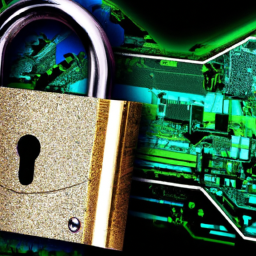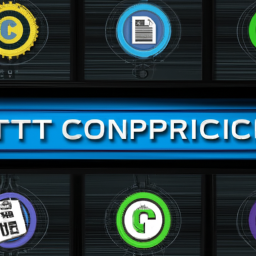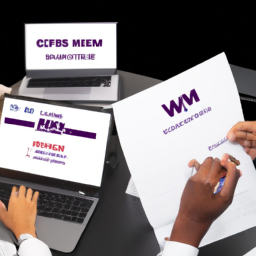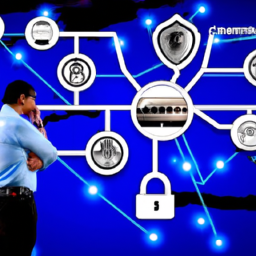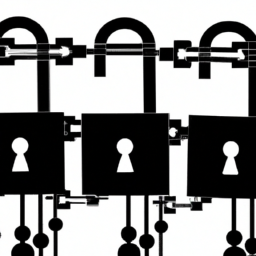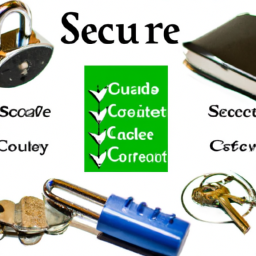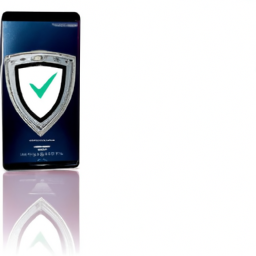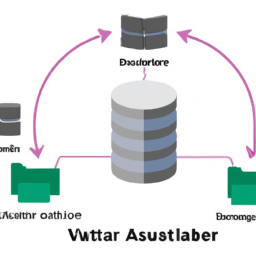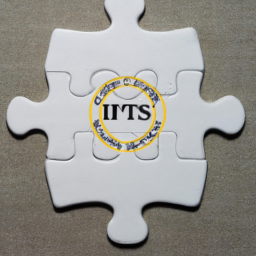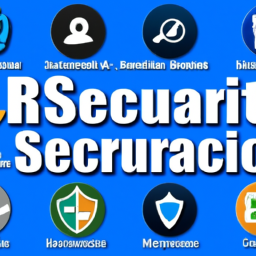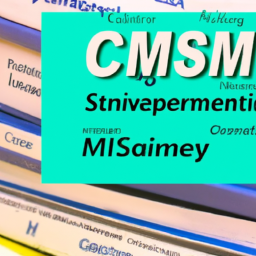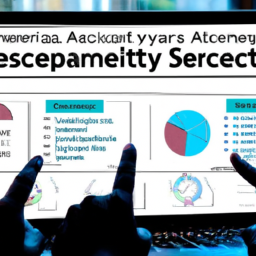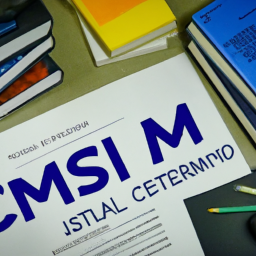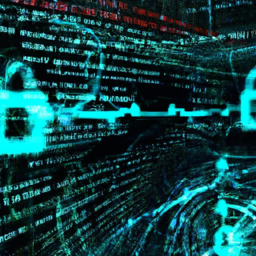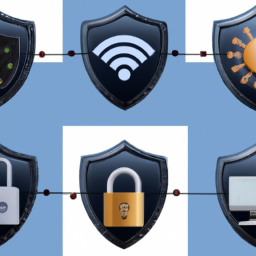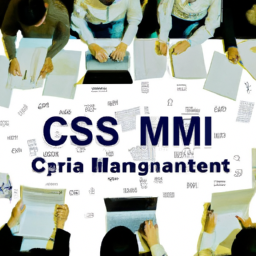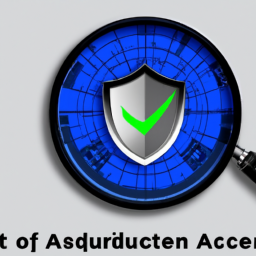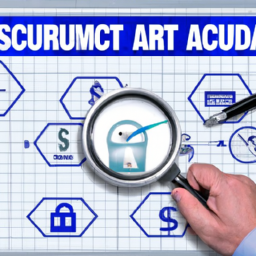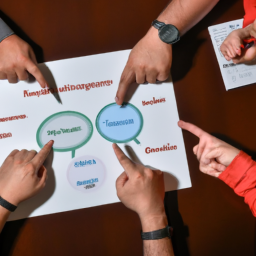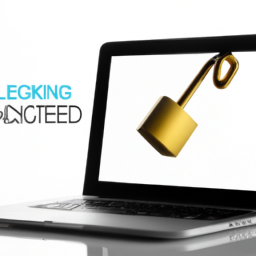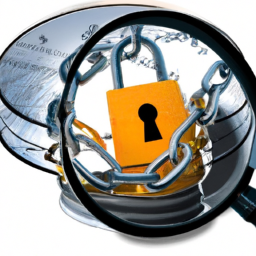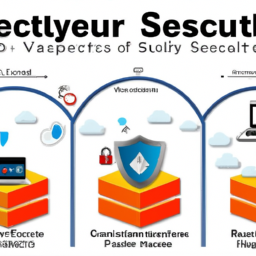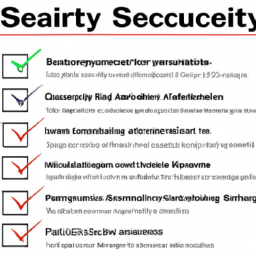Do you ever feel like your organization’s security measures are not up to par? Are you worried about the potential risks and vulnerabilities that could compromise your company’s sensitive information? Look no further, because we have the solution for you. In this article, we will guide you through the process of building a strong security compliance governance strategy.
Imagine a fortress, impenetrable and fortified with the latest technology and expertly trained guards. This is the level of security that your organization needs to strive for. By following a strategic approach, you can establish robust security measures that will protect your valuable assets from potential threats.
In order to achieve this, you must first understand the regulatory requirements that apply to your industry. This will serve as the foundation for your security compliance governance strategy.
Next, you need to assess the security risks and vulnerabilities that your organization faces. Once you have identified these, you can develop policies and procedures that address these specific challenges.
But it doesn’t stop there. Implementation of security controls is crucial to ensure that your organization’s security measures are effective. Additionally, training your employees on security awareness is imperative, as they are often the first line of defense against potential threats.
Lastly, regular monitoring and updating of security measures will ensure that your organization is always one step ahead of any potential risks.
So, join us as we delve into the intricacies of building a strong security compliance governance strategy. By the end of this article, you will be equipped with the knowledge and tools necessary to fortify your organization’s security and protect it from any potential threats.
Key Takeaways
- Understanding regulatory requirements is crucial for building a strong security compliance governance strategy.
- Regular assessments help identify security risks and vulnerabilities that need to be addressed.
- Developing and enforcing policies and procedures is essential for maintaining compliance and monitoring.
- Implementing security controls, such as physical measures and technical measures, minimizes the risk of security breaches and protects sensitive data.
Understand Regulatory Requirements
To build a strong security compliance governance strategy, it’s essential to understand the regulatory requirements.
As a meticulous strategist, you must first familiarize yourself with the legal obligations that apply to your organization. This involves comprehending the specific compliance frameworks that pertain to your industry, such as HIPAA for healthcare or GDPR for data privacy.
By understanding these requirements, you can ensure that your security measures align with the necessary standards and avoid any potential legal consequences.
It’s important to note that regulatory requirements are not static and can change over time. Therefore, staying up to date with any updates or modifications is crucial to maintaining compliance.
By comprehensively understanding the legal obligations and compliance frameworks, you can effectively assess security risks and vulnerabilities in the subsequent section, ensuring a robust security compliance governance strategy.
Assess Security Risks and Vulnerabilities
Identify potential security risks and vulnerabilities by conducting regular assessments. This step is crucial in building a strong security compliance governance strategy. By identifying vulnerabilities, you can proactively address them before they’re exploited by malicious actors.
Conducting risk assessments allows you to understand the potential impact of these vulnerabilities on your organization’s security posture. Take a meticulous approach when conducting these assessments, ensuring that all possible risk areas are thoroughly evaluated. This will enable you to prioritize and allocate resources effectively to mitigate the most critical risks.
Consider both internal and external factors that could contribute to vulnerabilities, such as outdated software, weak passwords, or inadequate physical security measures. By conducting regular assessments, you can stay ahead of emerging threats and continuously improve your security posture.
Transitioning into the subsequent section about developing policies and procedures, it’s important to establish a strong foundation based on your risk assessment findings.
Develop Policies and Procedures
Establish effective and efficient policies and procedures to ensure the security of your organization’s systems and information. This is crucial for policy enforcement and compliance monitoring.
By developing comprehensive policies and procedures, you create a strong foundation for security governance. First, establish a clear and concise policy framework that outlines the organization’s security objectives and expectations.
Next, create procedures that detail specific steps to be taken in different scenarios, such as incident response or access control.
Lastly, implement a robust compliance monitoring system to ensure adherence to these policies and procedures. Regular audits and assessments will help identify any gaps or weaknesses in your security program, allowing you to take proactive measures to address them.
With well-defined policies and procedures in place, you can seamlessly transition into implementing effective security controls to safeguard your organization’s assets.
Implement Security Controls
Implementing security controls requires a comprehensive understanding of the organization’s systems and information to effectively safeguard its assets. By implementing security measures and enforcing security protocols, the organization can minimize the risk of security breaches and protect sensitive data. Security controls can include physical measures such as access controls and surveillance systems, as well as technical measures like firewalls and encryption. To give you a visual representation, consider the following table:
| Security Control | Description | Purpose |
|---|---|---|
| Access Controls | Restrict access to authorized personnel only | Prevent unauthorized access |
| Encryption | Convert sensitive data into unreadable format | Protect data from unauthorized disclosure |
| Incident Response | Plan and procedures to respond to security incidents | Minimize damage and recover quickly |
By implementing these security controls, the organization can establish a strong security compliance governance strategy. This sets the foundation for the next step: training employees on security awareness, which is crucial in maintaining a secure environment.
Train Employees on Security Awareness
Make sure your employees are well-trained in security awareness to protect your organization from potential threats and vulnerabilities. A comprehensive employee training program is essential in creating a strong security culture within your organization. Here are five key elements to include in your security awareness program:
-
Regular training sessions: Conduct regular training sessions to keep employees updated on the latest security threats, best practices, and company policies.
-
Phishing simulations: Use simulated phishing attacks to educate employees on how to identify and respond to phishing attempts.
-
Security policies and procedures: Clearly communicate and enforce security policies and procedures to ensure employees understand their responsibilities.
-
Incident response training: Train employees on how to respond to security incidents to minimize the impact and prevent further damage.
-
Ongoing reinforcement: Provide continuous support and reinforcement through reminders, newsletters, and additional training materials.
By implementing a comprehensive security awareness program, you empower your employees to be proactive in safeguarding your organization’s sensitive information. Transitioning into the subsequent section, it’s crucial to regularly monitor and update security measures to stay ahead of emerging threats.
Regularly Monitor and Update Security Measures
To maintain a secure environment, it’s crucial to conduct ongoing security audits and assessments. By regularly evaluating your security measures, you can identify any vulnerabilities or weaknesses and take immediate action to address them.
Additionally, staying up to date with emerging threats and industry trends allows you to proactively adapt your security measures and protect against new risks. By implementing these practices, you can ensure that your organization maintains a strong and resilient security posture.
Conduct Ongoing Security Audits and Assessments
Ensure you continuously evaluate the effectiveness of your security measures by conducting ongoing security audits and assessments, revealing any vulnerabilities and strengthening your governance strategy.
This involves regularly reviewing and testing your security controls to identify any weaknesses or gaps in your systems. Consider conducting security audits on a quarterly or annual basis, depending on the size and complexity of your organization.
Additionally, engage in third-party assessments to gain an objective perspective on your security posture. These assessments can provide valuable insights and help you identify areas for improvement.
Stay vigilant and proactive in addressing any identified vulnerabilities to ensure the ongoing protection of your systems and data. By regularly assessing and updating your security measures, you can stay ahead of potential threats and strengthen your overall security compliance governance strategy.
Transitioning into the next section, it’s crucial to stay up to date with emerging threats and industry trends to enhance your security measures.
Stay Up to Date with Emerging Threats and Industry Trends
Now that you’ve conducted ongoing security audits and assessments to identify vulnerabilities and gaps in your organization’s security compliance governance, it’s crucial to stay up to date with emerging threats and industry trends.
Being proactive in this regard is essential for maintaining the security of your systems and data. By staying informed about the latest threats and trends, you can better anticipate and mitigate potential risks before they turn into major security incidents.
To accomplish this, you should actively engage in threat intelligence sharing initiatives with other organizations and industry groups. Additionally, make sure you have a robust incident response plan in place to effectively handle any security breaches or incidents that may occur.
By continuously monitoring the threat landscape and promptly adapting your security practices, you can strengthen your security compliance governance strategy and protect your organization from evolving threats.
Frequently Asked Questions
How can organizations ensure that their security compliance governance strategy aligns with the specific regulatory requirements of their industry?
To ensure your security compliance governance strategy aligns with specific regulatory requirements of your industry, you must address industry-specific challenges and adhere to the regulatory compliance framework.
Understand the unique risks and regulations that affect your industry and tailor your strategy accordingly.
Conduct thorough research, consult with experts, and stay updated on any changes or new regulations.
Implement meticulous controls, processes, and training programs to ensure compliance and mitigate risks effectively.
Strategic alignment with industry regulations is crucial for maintaining a robust security compliance governance strategy.
What are some common security risks and vulnerabilities that organizations should be aware of when developing their security compliance strategy?
When developing your security compliance strategy, it’s crucial to be aware of common security risks and vulnerabilities.
These include phishing attacks, malware infections, insider threats, and data breaches.
By understanding these risks, you can implement effective security controls to mitigate them.
This may involve implementing strong access controls, regularly updating software and systems, conducting employee training on security best practices, and regularly monitoring and auditing your network for any potential vulnerabilities.
How can organizations effectively communicate and enforce their security policies and procedures to ensure compliance throughout the company?
To effectively communicate and enforce security policies and procedures, organizations must employ a variety of strategies.
Start by fostering a culture of security awareness and education throughout the company. Regularly communicate the importance of security policies through training sessions and workshops.
Implement clear and concise policies that are easily understandable and accessible to all employees. Utilize technology solutions such as automated reminders and monitoring tools to ensure compliance.
Regular audits and assessments can help identify any gaps or areas for improvement, allowing for timely enforcement and corrective actions.
What are some best practices for implementing security controls that are both effective and compliant with regulatory requirements?
To implement automated controls that are effective and compliant with regulatory requirements, it’s crucial to have a knowledgeable and meticulous approach. Here are some best practices:
-
Start by identifying the specific security controls needed based on the regulatory requirements relevant to your industry.
-
Implement automated tools and technologies that align with these controls, ensuring they’re regularly updated and tested.
-
Conduct regular audits to assess the effectiveness of the controls and make necessary improvements.
This strategic approach will help maintain compliance and strengthen your organization’s security posture.
How can organizations create an ongoing training program to educate employees about security awareness and ensure their compliance with security measures?
To create an ongoing training program for employee compliance with security measures, you must start by understanding the importance of security awareness.
Develop a comprehensive training curriculum that covers topics such as identifying phishing attacks, password management, and safe browsing.
Incorporate interactive elements like quizzes and simulations to engage employees and reinforce their knowledge.
Regularly update the training materials to reflect the latest security threats and best practices.
Monitor and track employee progress to ensure continuous improvement and compliance.
Conclusion
Congratulations! You’ve successfully navigated the intricate world of security compliance governance strategy. By understanding regulatory requirements, assessing risks, and implementing policies, you’ve built an impenetrable fortress of security measures.
Your meticulous approach has transformed your organization into an impregnable stronghold. With regular monitoring and updates, you’ve ensured that no threat goes unnoticed.
Your employees are now well-versed in security awareness, making them an invaluable asset.
So sit back, relax, and bask in the glory of your foolproof security strategy.




